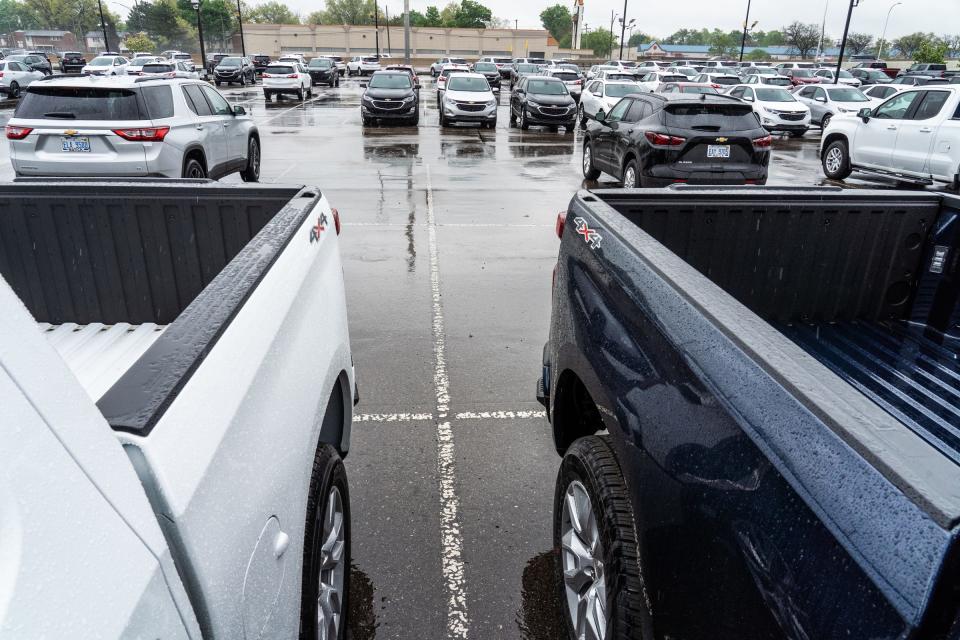How bad can it get? 4 reasons car prices, availability show no signs of improving
There was a time when you could walk onto a dealership lot and buy whatever vehicle you had your heart set on.
Oh, for those days.
The market for new and used vehicles has gone haywire in 2021 as the global chip shortage triggered by the pandemic has constricted automotive production, forcing automakers to prioritize production of some vehicles over others and sending buyers scrambling to try to find what they want.
The upshot is higher prices and limited availability – and the situation is showing no signs of improving.
How bad can it get?
Average new-vehicle prices could continue rising in the coming months before leveling off around $50,000, estimates Kevin Roberts, director of industry insights and analytics at car-buying site CarGurus.
►Got a car lease?: Your vehicle could be worth thousands of dollars more than expected because of COVID-19
►A car for less than $10,000?: You're looking for a unicorn
At one point a few months ago, the best advice was to wait to buy a car if you could.
Maybe that wasn't such good advice after all.
Here are four reasons the car market shows no signs of cooling off:
Prices are still rising
The average price of new vehicles reached an all-time high in September for the sixth straight month, topping $45,000 for the first time, according to Cox Automotive's car-valuation service Kelley Blue Book.
The average reached $45,031, up 12% from a year earlier and 4% from August.
“As long as new-vehicle inventory remains tight, we believe prices will remain elevated,” Cox Automotive analyst Kayla Reynolds wrote in an analysis.
Availability is more limited than ever
The number of available new vehicles continues to dwindle.
The supply of unsold new vehicles totaled about 915,000 at the end of September, down from 1.01 million a month earlier, according to Kelley Blue Book. To put things in perspective, that compares with 2.5 million in 2020 and 3.5 million in 2019.

Of recent car buyers, 30% said "a vehicle they were planning to see in-person was sold before they got there," according to a survey of 600 U.S. shoppers in July by CarGurus.
It's especially rough at Toyota and Honda, which have the lowest supply in the industry, with only 17 days of vehicles to sell, which means, basically, they're selling vehicles as soon as they can make them.
Popular SUVs like the Toyota RAV4 and Honda CR-V are particularly hard to find.
Also below the current industry average of 30 days supply are Lexus, Mini, Acura, Kia, Subaru, GMC, Land Rover, Chevrolet, Mazda, Nissan and BMW, according to Kelley Blue Book.
Prioritizing high-profit vehicles
Forced by limited chip supplies to choose which vehicles to build, automakers are generally prioritizing larger, more expensive rides like pickups and SUVs.
"If you’re really looking for a lower-margin vehicle or a lower-(priced) trim variant, it’s going to be much, much more difficult," said Roberts of CarGurus.
Take, for example, the Chevrolet Malibu, part of a cheaper segment that has been declining in popularity. GM says it hasn't discontinued the midsize car. But it also hasn't manufactured a single Malibu since February.
Other automakers have simply discontinued slow-selling vehicles altogether. Recent cancellations include the Mazda 6 and the Toyota Avalon.
People are ditching mass transit
Only 53% of shoppers said they plan to use public transportation at the same level or more often than they before the pandemic, according to the CarGurus study.
And only 59% plan to use ride-sharing services the same or more.
In other words, many people who previously shared a ride to their destination are suddenly in the market for a personal vehicle.
"There’s a huge demand for private mobility," Roberts said.
You can follow USA TODAY reporter Nathan Bomey on Twitter @NathanBomey and subscribe to our free Daily Money newsletter here for personal finance tips and business news every Monday through Friday morning.
This article originally appeared on USA TODAY: Car prices up as chip shortage drives low vehicle inventory

 Yahoo Movies
Yahoo Movies 